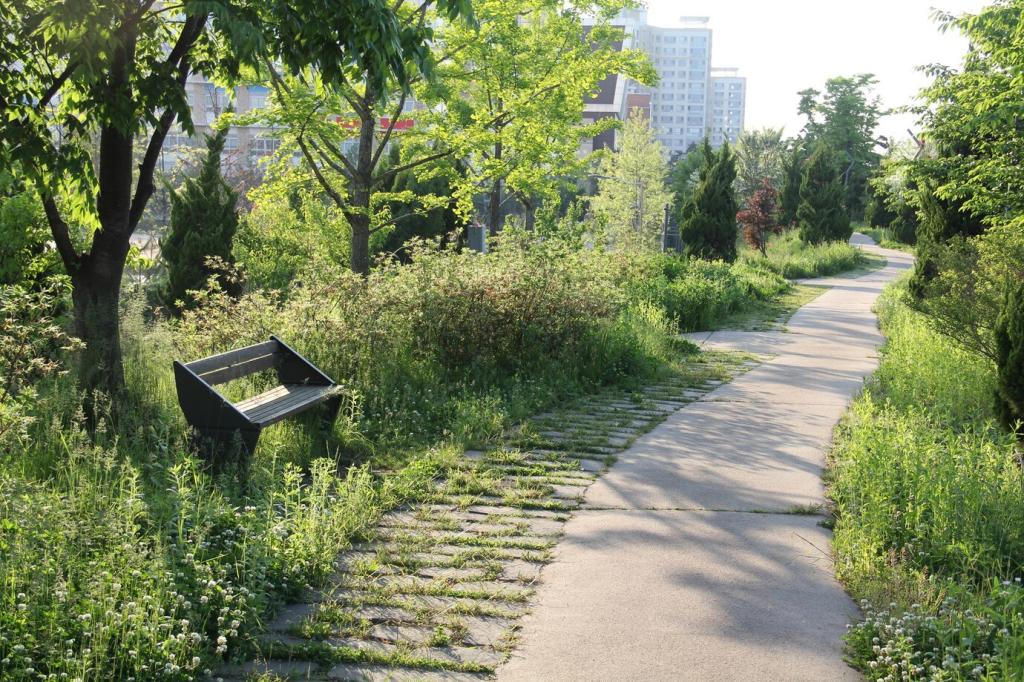Embracing eco-friendly materials in landscape construction is a vital step toward creating beautiful, enduring outdoor spaces that harmonize with nature. Sustainable landscaping not only preserves precious natural resources but also promotes healthier environments for communities and wildlife. By choosing materials that are recycled, responsibly sourced, or renewable, designers and homeowners can significantly reduce their environmental impact while still achieving a visually stunning result. This approach balances aesthetics with functionality, ultimately paving the way for landscapes that thrive for generations.
Natural Stone and Reclaimed Materials
01
Local Stone for Timeless Elegance
Locally quarried stone brings a natural, enduring beauty to landscape projects while minimizing transportation emissions. Unlike manufactured alternatives, stone harvested from nearby sources harmonizes perfectly with native soil, climate, and plant life, creating a seamless connection between built elements and the wider environment. The durability and low maintenance requirements of natural stone mean that hardscapes—such as patios, retaining walls, and garden edging—remain functional and attractive for decades, reducing material waste over time. Furthermore, local stone often reflects the geological history of the area, featuring unique colors and textures that add authenticity to any outdoor space. By prioritizing regional materials, landscape professionals foster a sense of place and strengthen local economies as well.
02
Reclaimed Brick for Vintage Charm
Reclaimed brick provides both an eco-conscious solution and a touch of vintage charm to sustainable landscaping. Salvaged from old buildings or infrastructure, these bricks are repurposed to create pathways, patios, or decorative features. Their previous life gives each piece character—a weathered patina and subtle color variations that contrast the uniformity of new materials. By diverting waste from landfills and reducing demand for newly manufactured bricks, reclaimed materials lower the overall ecological impact of construction. Additionally, their proven resilience and enduring style ensure that features built with reclaimed brick will stand the test of time, requiring fewer repairs and replacements.
03
Salvaged Wood for Warmth and Texture
Using salvaged wood in landscape construction introduces warmth and tactile richness to outdoor spaces. Panels, beams, or decking salvaged from deconstructed buildings or old infrastructure find new purpose as garden fences, pergolas, or benches. This approach prevents timber from being discarded and reduces the need for new logging. Salvaged wood often boasts aged hues and striking grain patterns, elevating the character and atmosphere of gardens. Furthermore, it allows designers to weave stories into their projects, connecting the past to the present. With proper treatment and care, rescued wood materials perform admirably outdoors, embodying both sustainable principles and appealing aesthetics.
Renewable and Responsibly Sourced Wood
FSC-Certified Lumber for Eco-Conscious Building
Forest Stewardship Council (FSC) certification assures that the lumber used in landscape construction comes from forests managed according to stringent environmental and social criteria. This certification guarantees responsible harvesting techniques that maintain biodiversity, water quality, and forest regeneration. FSC-certified wood is available in a range of species suitable for decks, pergolas, planters, and fences, meeting structural needs while safeguarding forest integrity. By specifying FSC products, landscape professionals and homeowners drive demand for conscientious forestry, supporting communities that rely on healthy forests and mitigating the negative effects of illegal logging. This traceable, eco-friendly choice demonstrates a genuine respect for nature in every outdoor project.
Bamboo for Rapid Renewal
Bamboo is celebrated for its extraordinary growth rate and renewable qualities. Unlike traditional hardwoods that may take decades to mature, bamboo plants reach harvestable size within a few years, making them one of the most sustainable building materials available. Its natural strength and dimensional stability make bamboo ideal for decking, fencing, and decorative accents. In addition, bamboo cultivation sequesters significant amounts of carbon and requires minimal fertilizer or pesticides, enhancing its positive impact on the environment. Because of its incredible versatility and appealing aesthetic, bamboo is becoming an increasingly popular alternative in landscapes designed for sustainability without compromising on style or performance.
Thermally Modified Wood for Longevity
Thermally modified wood is a breakthrough sustainable material, created by treating timber with heat and steam instead of chemicals. This process enhances the wood’s durability, stability, and resistance to rot—qualities essential for outdoor applications such as decking, cladding, and garden structures. The modification process uses no toxic substances, preserving air and soil quality around constructed landscapes. In addition, thermally modified wood can be produced from fast-growing, less endangered species, reducing pressure on overharvested forests. This innovative approach extends the life of wooden landscape features, decreases maintenance requirements, and aligns perfectly with green building standards for long-term environmental stewardship.

Previous slide
Next slide
